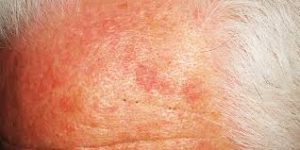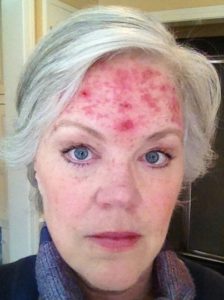What is an AK (Actinic Keratosis)?
An actinic keratosis AK forms when the skin is damaged by ultraviolet (UV) rays from sun exposure or indoor tanning. When you have more than one AK, you have actinic keratosis, or AKs.
Anyone who has many AKs should be under a dermatologist’s care. Most people who have many AKs continue to g et more AKs over time. AKs are considered precancerous. Left untreated, AKs may turn into a type of skin cancer called squamous cell carcinoma.
et more AKs over time. AKs are considered precancerous. Left untreated, AKs may turn into a type of skin cancer called squamous cell carcinoma.
By seeing a dermatologist for full body skin exams, the AKs can be identified and treated before they become skin cancer. If skin cancer does develop, it can be caught early when treatment often cures skin cancer.
Treatment of AKs
AKs can be treated by applying liquid nitrogen (freezing) and allowing them to exfoliate off. The freezing will address individual spots, but will not address any sub-clinical AKs that may have not yet come to the skin’s surface.
You may also treat an entire body area for the descreet AKs you can visually identify, as well as those undeclared lesions, by using a topical such as Efudex cream or Imiquimod. Both of these treatments can be used to address small areas, such as a forehead, cheeks or hands. While a long recognized standard of treatment, many patients find the level of skin reaction they experience to be intolerable. They may experience swelling, blistering, oozing or weeping of the skin as well as discomfort.
For those patients wishing to manage and treat larger areas affected by AKs, such as the face, chest, arms or back, Photodynamic Therapy has proven to be a favorable option. Photodynamic Therapy (PDT) is a two step treatment in which a Levulan kerastick is applied to the skin and left to incubate for prescribed amount of time. The Levulan is a photo sensitive drug that is attracted to pre-cancerous cells (AKs). The medicine is activated with a Blu- Light and work to breakdown the pre-cancerous lesions.
PDT patients will be photosensitive for 36 hours after treatment, and MUST avoid sun exposure and bright overhead lights. They may experience some mild swelling and crusting of their pre-cancerous lesions. Those lesions with exfoliate off within a few days. In addition to the improvement in their skin’s health most patients experience a cosmetic benefit as well. Many patients opt to have their Levulan activated with IPL or Vbeam Perfecta laser to treat and improve brown sun damage and facial redness.
For patients that are equally concerned with the cosmetic appearance of their skin as well as their skin health, Fraxel Laser is an excellent option to treating Actinic Keratosis and brown pigmented sun damage. Fraxel laser ablates damaged skin away allowing healthy new skin to to form in its place. Fraxel laser will reduce brown pigmented sun damage, soften fine lines and wrinkles and smooth the skins texture. For more information about your treatment options for actinic keratosis, please contact us.


